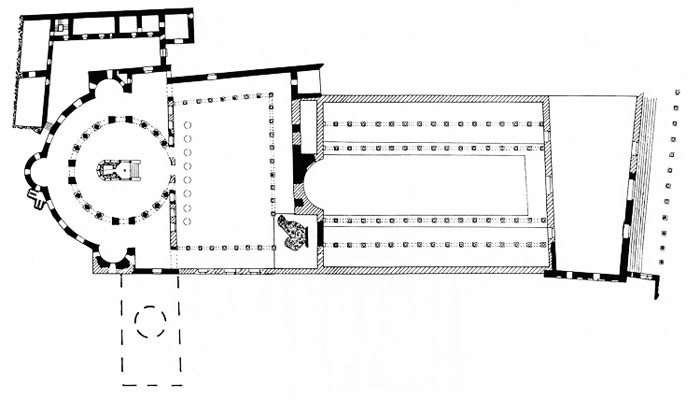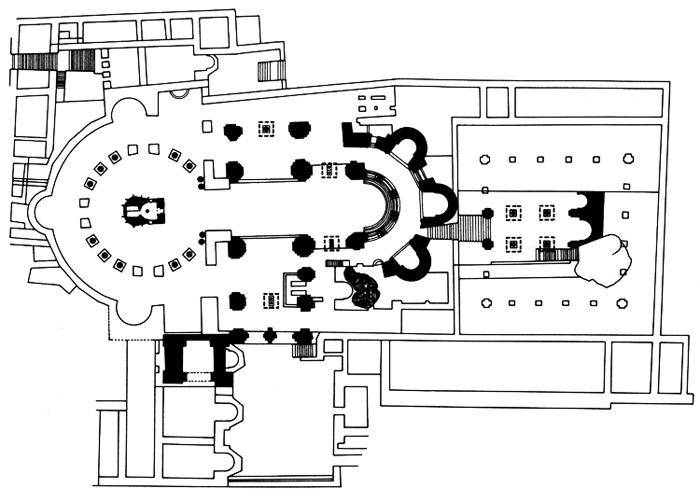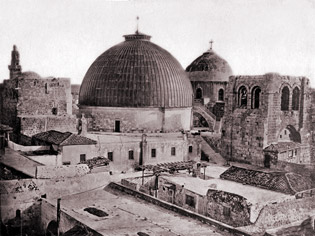Church of the Holy Sepulcher
4th century, Jerusalem



Church of the Holy Sepulcher in the late 19th century. Photo courtesy Columbia University, Ware Library Photo Collection.
As the biblical location of the events of Christ's Passion, Jerusalem understandably occupies a prominent place in the Christian religion. Although Christian pilgrims had likely traveled to Jerusalem in earlier period, the first records that confirm their presence in the Holy Land date from the fourth century, with some sources identifying Helena, the mother of Constantine the Great, as the first pilgrim.
Helena's reputed discovery of the True Cross helped to stimulate Constantine's interest in reestablishing Jerusalem as a major urban center after its near total destruction by the Romans in 70 CE. Among Constantine's many projects was the construction of the Church of the Holy Sepulcher on Mount Golgotha, the site of Christ's crucifixion.
Numerous pilgrims' accounts attest to the fame of the Church of the Holy Sepulcher. The anonymous Bordeaux pilgrim, who made the journey from what is now southwestern France to Jerusalem in 333 CE, called it a monument of wondrous beauty and commented on its baptismal font. Ogier d'Anglure, who traveled to Jerusalem in 1395-6, observed how pilgrims spent the night there, so that they could say a candle-lit vigil at the various stations associated with Christ's death and resurrection. Hardly any of these accounts, however, describe the Church of the Holy Sepulcher in detail.
The same is true of other monuments along the way, with pilgrims placing greater emphasis on listing the names of places that they visited and corroborating those names with the ones listed in the Bible. This disconnect finds its most curious expression in the numerous versions of the Church of the Holy Sepulcher built in Europe after Jerusalem came under Muslim control in 1099. Intended to simulate the experience of visiting the Holy Land, these "replicas" arguably made Jerusalem seem more like a place that existed in the pilgrims' imagination than a real destination.
Exhibition Objects Associated with the Holy Land
- Double-Arm Reliquary Cross
- Reliquary Box with Stones from the Holy Land
- Pilgrim Flask
- Reliquary of the True Cross (Enameled Cross of Pope Pascal I)
- Reliquary of the True Cross
- Reliquary of the True Cross
- Reliquary of the True Cross
- Reliquary of the True Cross
- Reliquary of the True Cross
- Panel-Shaped Reliquary of the True Cross




